Published on December 13, 2019
A recent article published by the AP around our project did not include all the facts on an aspect of the permitting process and only told one side of the narrative. We want to make sure Idahoans have the full story.
Here is what you need to know.
Midas Gold is working through the permitting process exactly as it was intended and following all of the rules outlined by federal agencies. We are committed to a permitting process based on objective scientific review that encourages a collaborative process that brings all stakeholders around the same table to share information and input to help guide the project.
The article discusses the process of preparing an environmental report called a Biological Assessment, which is part of Section 7 of the Endangered Species Act and an important part of the permitting process, and our role being designated as a “non-federal representative.”
What the article failed to mention is that Midas Gold is only helping to prepare the DRAFT Biological Assessment, which is common practice for an applicant to do on environmental topics from grazing to power projects to mining and is specifically provided for in multiple agencies’ regulations and guidelines.
The draft assessment is not the final document. All authority for creating the final document remains in the hands of federal regulators.
The piece also fails to discuss that the draft is being prepared through an informal consultation process alongside five federal agencies, three state agencies and tribes that meet regularly to review the data, discuss the implications and compile the DRAFT Biological Assessment.
Everything occurring around the creation of the draft Biological Assessment is how the process is intended to work. The Forest Service’s own guidelines clearly states, “There is a clear need for early, regular and fully informed coordination among federal agencies and applicants, in order to as completely as possible inform the consultation, resolve conflicts and design the project to minimize adverse effects.” By being at the table with agencies and tapping into our team’s vast knowledge of the area, we can more effectively minimize any impacts to critically important wildlife.
It is also important to note that Midas Gold used its involvement in the informal consultation process on the Biological Assessment to successfully advocate for the inclusion of state agencies and the tribes, both of which were previously excluded from the process. An open, collaborative and inclusive process ensures all relevant information and perspectives are at the table.
The story neglects to mention that the draft Biological Assessment will be delivered to the U.S. Forest Service, which has absolute authority to accept, modify or reject any of the content generated from this inclusive process. This is the same process for dozens of other environmental reports and documents prepared by Midas Gold and its consultants and submitted to the agencies over the past three years. The U.S Forest Service will then create their own Biological Assessment and deliver it to U.S. Fish and Wildlife Service and NOAA Fisheries, where it will be independently reviewed and analyzed. Midas Gold has no involvement in this process. These agencies will craft the final document, known as a Biological Opinion, which is used to evaluate our project.
Once a Biological Opinion is delivered by the agencies, it will be subject to a formal consultation process for discussion and negotiation.
Regulations confirm that “if a biological assessment is prepared by the designated Non-Federal representative, the Federal agency shall furnish guidance and supervision and shall independently review and evaluate the scope and contests of the biological assessment.” (50 C.F.R 402.08)
At the end of the day, Midas Gold has strived from the very beginning to make this permitting process better through transparent and cooperative engagement. We believe all evaluation and analysis should be done using science-based facts and that is exactly what has been happening. When all parties can directly engage with one another, it creates a more efficient and inclusive process that is more successful in identifying potential concerns and identifying solutions.
If you would like to learn more about the biological assessment process and see examples of other companies who have helped to prepare these documents, we encourage you to read our briefing paper.
If you have any questions, please do not hesitate to reach out to [email protected].
